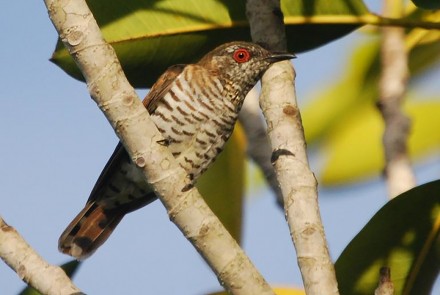Cuckoos trick other cuckoos in the race to own the nest

Australian native cuckoos are engaged in an arms race, competing with each other to take over other species’ nests.
The finding by Research School of Biology scientists gives new insights into the deceptive habits of cuckoos, which lay their eggs in other birds’ nests to dupe other mums into raising cuckoo chicks.
“Previous research has focussed on how cuckoos try to trick their hosts,” said Dr Ros Gloag, the lead author of the research paper, which is published in the latest Proceedings of the Royal Society B.
“What our study shows is that cuckoos have evolved traits to try to trick other cuckoos, too.”
Cuckoos the world over fool other birds into rearing their young by laying their egg in the other bird’s nest. They remove one of the existing eggs, so as to not arouse the host mother’s suspicions.
The eggs of many species of cuckoo have also evolved to mimic those of the host species, which further serves to fool the host mother. The young cuckoos hatch early and dominate the brood by pushing other chicks out of the nest.
However, there is so much competition between Australian native bronze-cuckoos that they have changed the way they disguise their eggs. Unlike cuckoos on other continents, the native cuckoo’s eggs do not mimic the host’s eggs. Instead, they have evolved new ways to hide their eggs from subsequent cuckoo invasions.
“These cuckoos target species that build domed grass nests that are quite dark inside,” Dr Gloag said. “The cuckoo’s eggs are coated in a dark pigment, which makes them hard to see in the nest.”
The host mother seems not to notice that one of her eggs has apparently changed colour. However, if a second cuckoo arrives to also oust an egg and lay one of hers in its place, it may be less likely to throw out the first cuckoo’s egg, instead targeting the lighter coloured, more visible host’s eggs.
Dr Gloag and colleagues from the ANU Research School of Biology used models of eggs of different shades to study the behaviour of the birds.
“When a cuckoo sneaked in to lay an egg, it evicted a dark coloured egg model much less often than either a light-coloured model egg or a natural host egg,” she said.
“This shows that dark colouring protects a first-laid cuckoo egg, because it will hatch first, and oust all the other eggs in the nest, including the second cuckoo’s egg.”
 Follow
Follow